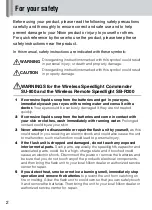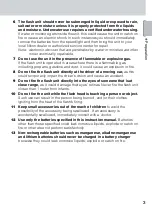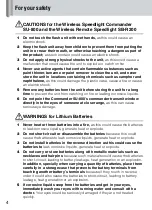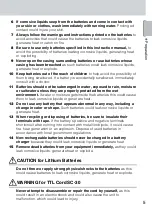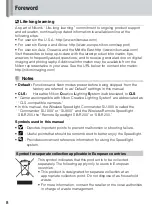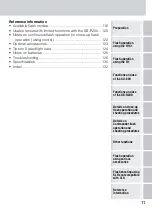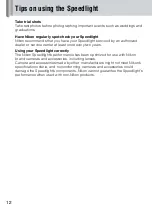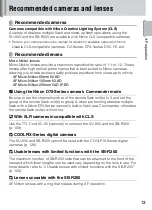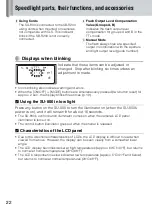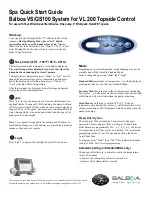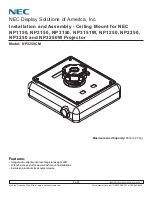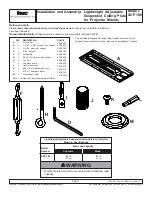
7
P
re
p
a
ra
tio
n
CLS offers various flash shooting possibilities by taking advantage of the
improved digital data communication capabilities of Nikon Speedlights and
cameras.
The major features are as follows:
• i-TTL Mode
This is a TTL auto flash mode in CLS. When using the i-TTL auto flash mode,
Monitor Preflashes are fired at all times. The flash output level is adjusted by
measuring the flash illumination that is reflected back from the subject,
resulting in an exposure that is less affected by ambient light (p. 116).
• Advanced Wireless Lighting
The wireless multiple flash operation in TTL (i-TTL) mode can be accomplished
with CLS-compatible cameras. The remote flash units can be divided into
three groups and flash output can be independently controlled for each group,
expanding the range of creative multiple flash shooting techniques (p. 26).
• Flash Value Lock
Flash Value, or “FV,” is the amount of flash exposure for the subject. Using FV
Lock with compatible cameras, you can lock in the appropriate flash exposure
for the main subject. This flash exposure is locked in, even if you change the
aperture or composition, or zoom the lens in and out (p. 98).
• Auto FP High-Speed Sync
High-Speed flash synchronization at your camera’s highest shutter speed is
now possible. This is useful when you want to use a wider aperture to ensure a
shallow depth of field blurs the background (p. 96).
See your CLS-compatible camera instruction manual for details on the Nikon
Creative Lighting System (CLS).
Nikon Creative Lighting System (CLS)
Summary of Contents for 4804 - SB R1 - Wireless Macro Flash System
Page 78: ...78 ...


